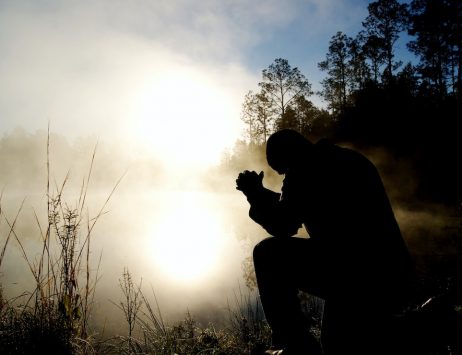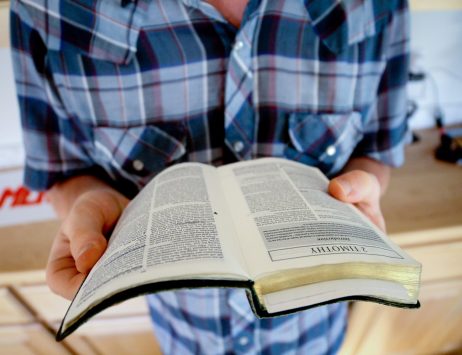In the gospel for the fourth Sunday of Lent, Jesus has a conversation about salvation with a Pharisee named Nicodemus. Read it here:
“Are you saved?” This was a tremendously important question in the religious circles I frequented in my youth. “Has he been saved yet?” “Who got saved at church last night?” One would think that being saved meant that you were out of danger, but it wasn’t unheard of for someone to be saved not only once but a number of times. As many times as it takes, I suppose. Being saved didn’t mean you were safe.
Our gospel picks up in the middle of a nighttime conversation between Jesus and a Pharisee named Nicodemus about how to be be saved. Jesus had been pointing out to Nicodemus that it’s impossible to recognize his divine authority without a spiritual rebirth, and Nicodemus was probing for details (John 3:1-13). As the reading begins, Jesus borrows a strange episode from the book of Numbers to make a point about being saved:
“And just as Moses lifted up the serpent in the desert, so must the Son of Man be lifted up, so that everyone who believes in him may have eternal life” (John 3:14-15).
As an educated Pharisee, Nicodemus certainly was familiar with this story, which took place when Moses was leading his people to the promised land. As Numbers recounts, the Hebrews were no longer slaves to their masters in Egypt, but they were resisting the the covenantal standards that God had given them through Moses. What is worse, they were voicing their mistrust both of Moses and the God who delivered them.. God had been providing them with victory after victory over their enemies and miraculous food and drink to eat, but this wasn’t enough. Their journey to take possession of the promised land was punctuated with grumbling, threats, and revolt.
After one such rebellious episode, God sends venomous snakes to bite his people. They get the message and tell Moses that they’re ready to listen. God tells Moses to forge a snake out of bronze and put it on a stick. By looking at the bronze snake, those who were bitten would recover (Numbers 21:4-9).
As I said above, it’s a strange tale. God, who sent the snakes, surely could have made them go away. God could have taught Moses how to create anti-venom. God could have done any number of things, but instead, God allowed the snakes to keep biting the Israelites. And in order to be saved, they had to go look directly at the image of what was killing them.
This brings us back to our gospel passage. Jesus uses the story about the snakes to compare himself not to God, and not to Moses, but to the bronze serpent that must be lifted up. Later on in John’s gospel, we learn that when Jesus talks about being lifted up, he’s referring to his own crucifixion (John 12:32). So Jesus is telling Nicodemus that, like the bronze snake, he will become the image of what is killing us when he is nailed to the cross, and by gazing on him, we can be saved.
How does gazing on the crucified Jesus save us? Obviously, we can’t fix our physical eyes on Jesus’s tortured body. And I’m not sure that Jesus is telling us to meditate on religious art, as edifying as this practice can be. I think part of what he’s trying to say is that like the bronze serpent, his death reveals both what is killing us and what will save us. The crucifixion is a picture of what a people poisoned by malice, envy, ignorance, and cowardice are capable of. But the crucifixion is also an image of infinite compassion, a love powerful enough to absorb our evil and turn it into a sign of God’s eternal trustworthiness.
Being saved isn’t safe. God is not going to take the snakes away. They’ll keep biting us as we grumble toward the promised land. But every time we raise our trusting eyes to the crucified Lord, we’ll be saved.



